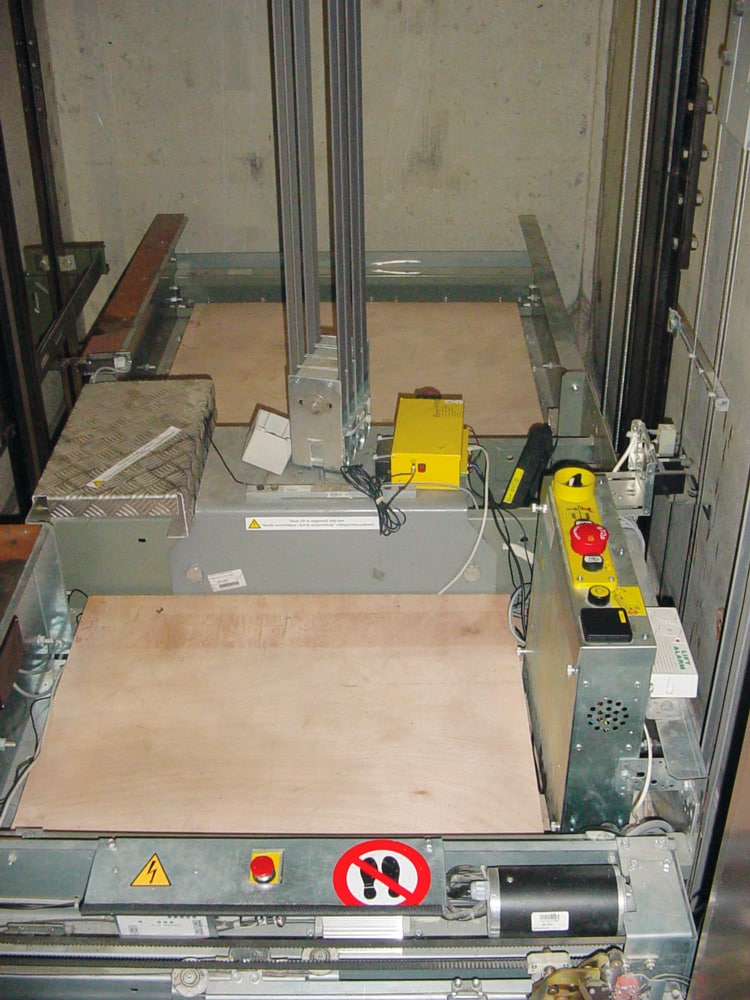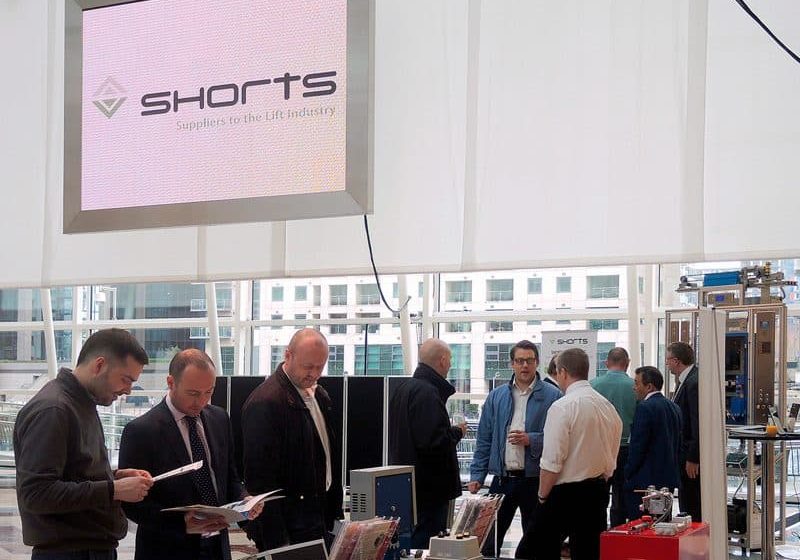Developments in EN 81-20, 81-50 and Related Standards
Jun 1, 2014

Esfandiar Gharibaan talks on upcoming European codes and ever-more-important market surveillance.
reprinted from Liftinstituut Magazine
Esfandiar Gharibaan is chairman of the European Committee for Standardization Technical Committee (CEN/TC) 10 (for lifts, escalators and moving walks). Therefore, he has a broad overview of developments in codes and standards. When asked, he was gladly willing to share his knowledge and views. Gharibaan stated that much of his working time is spent on his responsibility as chairman of CEN/TC 10 and related activities. He, for instance, also attends several meetings of other CEN and International Organization for Standardization committees, working groups (WGs) and task forces. “I can only do my job as a chairman if I know about the ongoing issues and if I am well informed about the discussions and position of stakeholders on those issues,” he remarked.
“The transition period for EN 81-20 and 81-50 of three years is the absolute maximum. The industry needs to be ready on time.” – Gharibaan
Two Standards, Instead of One
There are more than 400 CEN committees. CEN/TC 10 is the oldest one that is still active. CEN/TC 10 WG 1 focuses on lifts, and more than 30 of its members are from National Standardization Bodies that are members of CEN. EN 81-20 and 81-50 are the main standards WG 1 has focused on in the last few years. Those standards will replace EN 81-1 and EN 81-2. While EN 81-20 formulates the safety and technical requirements for electric and hydraulic lifts, EN 81-50 describes the calculation, testing and examination of lift components. Gharibaan explains the reason for this change:
“By this structure, many redundancies of the text between the standards have been removed, and it also makes it easier to find information within those standards. I believe they have become more user friendly and flexible to revise or amend in the future. But, of course, CEN/TC 10 will be careful with the number of amendments and their timing to avoid unnecessary disturbance for the industry.”
Development of EN 81-20 and 81-50
Development of EN 81-20 and 81-50 took a long time. Gharibaan explains that is because they “are the main and most comprehensive standards for lifts. We wanted to make sure that the revision includes needs and requirements of the users and stakeholders of those standards as much as possible.” Considering that requirements of EN 81-1 and 81-2 are widely used for new lifts around the world, experts from outside Europe have been involved in the development of EN 81-20 and 81-50 from the beginning. Gharibaan expounded:
“We have utilized the cooperation agreement between CEN and the International Organization for Standardization (ISO), and ISO experts from China, Japan, South Korea and the U.S. have participated in the preparation process. During the public enquiry, in which we asked for comments on the draft of those standards, we received comments from 14 non-European countries, mostly from the Asian-Pacific region. This clearly shows that there is a worldwide interest for EN 81-20 and 81-50. We have considered every single comment seriously, and most of them have been accepted.”
“EN 81-20 and 81-50 are more flexible to update.” – Gharibaan
Major Changes/Highlights
When asked about the major changes/highlights of EN 81-20 with respect to EN 81-1 and 81-2, Gharibaan divided this into two main aspects: safety of the passengers and safety of the workers. From the passenger’s safety perspective, he mentions the changes made for landing and car doors:
“All the landing doors need to fulfill a pendulum shock test, and the forces that they have to withstand are increased. These changes are necessary to limit the deformation of the doors. There are also additional retainers requested for the doors, to hold the doors when the main guiding elements of the door fail.”
Furthermore, EN 81-20 describes the measures to be taken to prevent passengers from being hit by closing doors, which Gharibaan said apply to doors of all lifts. Relating to the worker safety, EN 81-20 requires larger refuge spaces on the car roof and in the pit. Gharibaan explained:
“The new requirements relate to the number of persons that may be present on the car roof and in the pit. Each person must have his own refuge space. The refuge space, therefore, can become bigger, depending on the number of persons expected to be present. Labels on the car roof and in the pit should indicate the number of persons allowed in those areas.”
A new requirement in EN 81-20 is to provide a control station in the pit. This allows the maintenance mechanic in the pit to move the car under his or her own control, preventing unnecessary risks while the car is moved by someone else outside the pit. Finally, a “bypass operation” for the car- and landing-door locks has been added. Explained Gharibaan:
“The main cause of disruption of lifts is the door locks. Workers sometimes need to over connect contacts to determine the cause of the failure in the lift, but there is a risk that they may forget to remove those over connections. This is a cause of a great risk when the lift is in normal operation. In EN 81-20, a clear bypass operation for the lift is described.”
Expected Implementation Date
It is expected for EN 81-20 to be published by CEN in July. However, EN 81-1 and EN 81-2 will remain valid until July 2017. The implementation of EN 81-20 implies that all lift installations and components have to meet the requirements of the new standards by July 2017. Gharibaan’s advice is:
“Do not wait until that moment, but take care of the design and product adjustments as soon as possible. Testing and certification of installations and/or components takes time. It is also possible that clients will ask for lifts and components in compliance with EN 81-20, before this deadline. So it is better to be ready as soon as possible.”
“SMEs are very welcome at CEN/TC 10.” – Gharibaan
Consequences
Financial
Gharibaan stated that the changes in the standards may also have some financial consequences. That is why he recommends using the transition period to have a good look at the economics of the implementation. Additionally, contracts should be adjusted, if necessary. “Try to avoid business risks as much as possible by taking these matters into account [at] an early stage,” he added. Relatedly, Gharibaan stated that while accident reports are important input, CEN/TC 10/WG 1 has also focused on avoiding risks in preparing the new standards, using risk-assessment methods.
For Notified Bodies
Gharibaan stated that the content of the EN 81-50, which also has to be implemented before July 2017, remains mainly the same, compared to what is stated about certification in the EN 81-1 and EN 81-2. “The certification procedures and processes are not changed. But, some certificates and testing documents, for instance, have to be adjusted,” he elucidated.
Accreditation and Market Surveillance
When asked about the quality and accreditation of Notified Bodies, Gharibaan said:
“Every country has its own accreditation system and its own accreditation body. The recast of the Lift Directive and the new legislative framework will also have an effect [on] accreditation and Notified Bodies, as it will be more stringent about the way the accreditation and auditing of the Notified Bodies takes place. This is a good development, and it is beneficial for the entire profession. What won’t be changed is that accreditation will remain a national matter, as well as market surveillance. Market surveillance will also become more and more important. I also hope that Notified Bodies will participate more and more in the already existing national and European forums for Notified Bodies.”
Globalization
All CEN members are committed to adopt the EN 81-20 and 81-50 standards in their countries. Furthermore, 14 CEN affiliate countries may do the same. Gharibaan also expected that Asian/Pacific and, possibly, South American countries will take these standards into account, explaining:
“Working together with ISO and all other interested national and international standardization organizations, the ultimate goal is that a certified product, which meets the requirements of EN 81-20 and 81-50, will be recognized and can be applied around the world.”
Other Developments in Standardization
There are also other standards under development. New standards are coming for lifts with inclined paths (EN 81-22) and lifts in seismic environments (EN 81-77). Gharibaan commented, “We are also preparing a new standard, EN 81-42, for lifting appliances with enclosed cabins and low speed.” Asked about new standards regarding evacuation lifts, he states that a technical specification, CEN/TS 81-76, has already been published:
We received comments from 14 non- European countries on the draft of EN 81-20 and 81-50. This clearly shows that there is a worldwide interest for these standards.
“This specification focuses on the evacuation of disabled persons in mid-rise buildings using lifts. In the near future, this may become a European standard. ISO is focusing on evacuation from high-rise buildings using lifts. When that standard is ready, we could adopt it as a European standard.”
Many existing standards refer to EN 81-1 and 81-2, so with the new EN 81-20 and EN 81-50, those standards have to be aligned, as well. “Furthermore, all standards are subject to periodic review, and they may need to be revised,” Gharibaan forecasted.
Energy Consumption
Gharibaan emphasized that EN 81-20 and EN 81-50 are safety standards. However, he noted:
“Environmental issues, such as energy consumption, have also been taken into account. For example, EN 81-20 requirements for ventilation of the lift well have been described in such a way that allows the building designer to find the optimal solution based on the input given by the lift installer. This will be especially useful with high-energy-performance buildings providing [a] safe environment, while minimizing loss of energy.”
Speaking about standards related to energy consumption, he said CEN and ISO are working together on this topic. ISO is leading the work:
“It’s better to have a set of global standards on this subject from the beginning. Therefore, CEN/TC 10 and ISO/TC 178 decided to have a joint project. The result of the project will be published as CEN and ISO standards at the same time. The standard with respect to energy measurement (EN ISO 25745-1) is already published, and EN ISO 25745-2 (with respect to emergency performance classification of lifts) and EN ISO 25745-3 (with respect to emergency performance classification for escalators) are under development.”
About CEN and Its WGs
Established in 1975 in Brussels, the European Committee for Standardization (CEN) is an independent European nonprofit organization. There are more than 400 CEN committees with their own working groups (WGs), covering many different industrial sectors. The only sectors not covered by CEN are the telecom and electrotechnical sector. CEN develops European standards, as well as harmonized standards in support of European regulations.
CEN/TC 10
CEN/TC 10 covers a large scope of products for lifts, escalators and moving walks. Currently, there are 12 working groups under it. Gharibaan emphasized that lifting appliances covered by CEN/TC 10 have one thing in common: “They are carrying persons and/or traveling through multiple fixed floors. As there are common risks within those products, our intention is to share experiences of the WGs and make full use of the expertise of the members to achieve a high level of safety common to all standards we produce.”
Members
Members of CEN/TC 10 committees are representatives of their National Standardization Bodies. Apart from the expertise of the members, Gharibaan said the members are also engaged and passionate about codes and standards:
“Our committee members are very interested in this subject. . . . Otherwise, it’s very difficult to give time and optimal contribution. As a member, you have to deal with a lot of different views, so you need to have a drive to exchange views and have an open mind to ideas from others. In the end, we need to achieve consensus. If everyone sticks to his own point of view, it will be impossible to get that consensus. The work in committees and WGs also takes a lot of time and patience. Even a relatively small standard takes at least three years to develop.”
Call for SMEs to Participate
Gharibaan encouraged small and medium-sized enterprises (SMEs) to consider taking a more active part in the standardization work, saying:
“One of our objectives is to involve SMEs as much as possible. This will not only help reflecting SMEs’ needs within the standards; participation of SMEs also [brings] a high level of technical knowhow and expertise to the standardization committees and WGs.”
Future Developments in Lifts
Considering the high rate of innovations in the lift industry in recent years, it is very difficult to predict the future. However, Gharibaan thinks there are a few trends that may give some indications. For example, the use of electronic systems in lifts is increasing. “Electronic systems are developing very rapidly and becoming smaller and also more economical to apply,” he stated. “Use of such systems may improve safety, accessibility, comfort and performance of lifts.”
Integration of lifts in the rest of the services in a building and in building-management and -access systems is becoming commonplace. “So, a lift will no longer be a standalone device,” noted Gharibaan. Sustainability and focus on energy consumption in the entire delivery chain for lifts will also remain important. This may not only affect manufacturing, logistics and installation, but also how the maintenance of lifts is carried out, said Gharibaan, noting “a strong commitment from the industry to improve energy efficiency for lifts.” Although there are not yet specific lift-industry regulations on this subject, it is expected that future regulatory development may include lifts within the scope of such regulations as the Energy-Related Product Directive. “This is a framework directive,” Gharibaan explained. “Lifts and escalators are, [thus far], not included in the implementing measures related to this directive. But, maybe this will change in the years to come.”
Get more of Elevator World. Sign up for our free e-newsletter.









